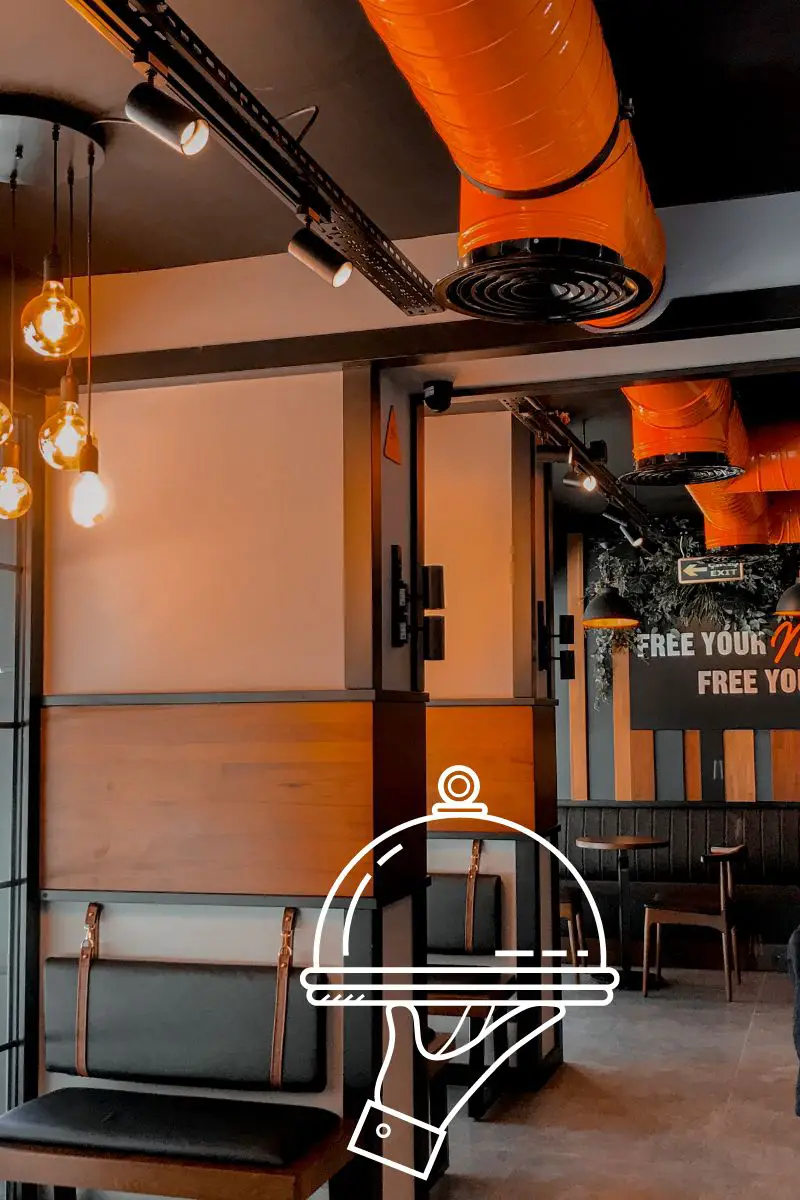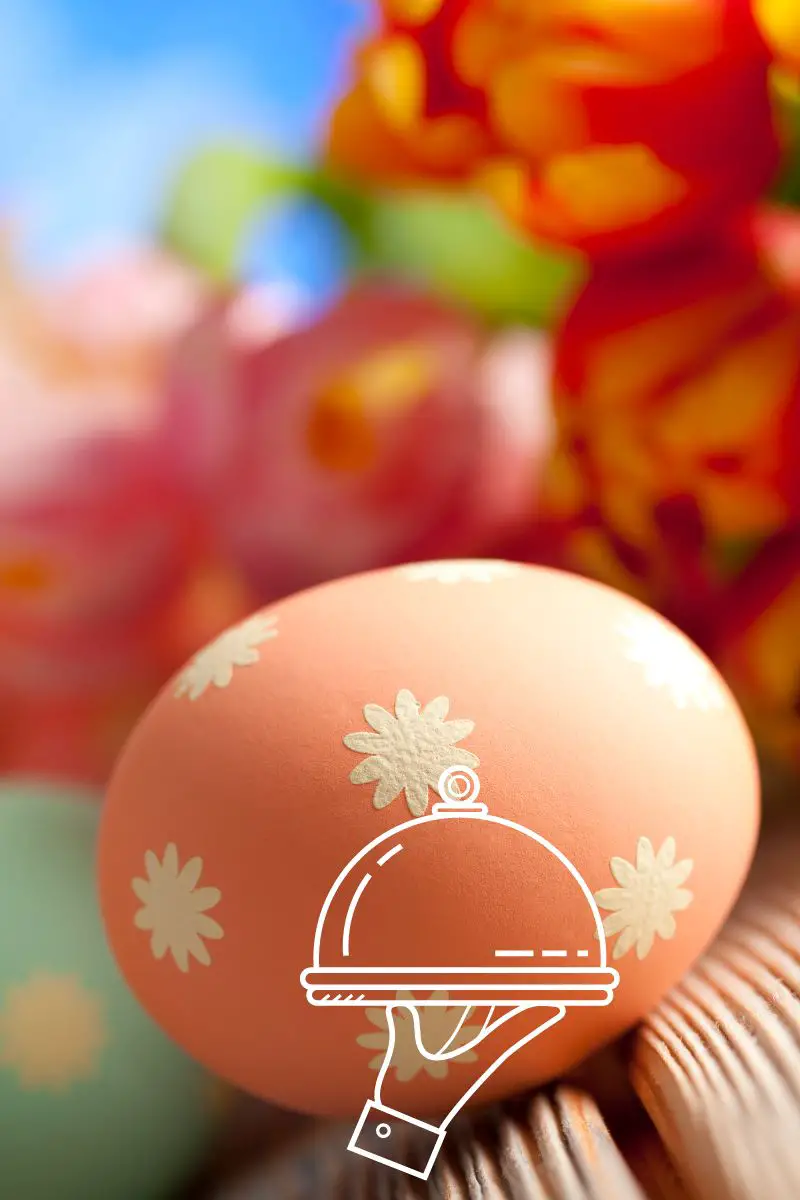Orange color in a restaurant. What does the color orange mean in a restaurant? We have previously seen generalities in other posts about this specific color, such as: Color psychology for restaurants and fast food businesses; Colors for restaurants, schemes and tips. But let’s go a little deeper.

In the restaurant industry, décor and design play a critical role in creating a memorable experience for diners. The colors used in a restaurant can influence the mood of customers, their perceptions and even their appetite. In this blog post, we will focus on one color in particular: orange. This vibrant hue has gained popularity in restaurant interior design due to its ability to convey energy and vitality. We will explore the meaning of the color orange and how it can impact customers’ dining experience. Discover how this color can transform your restaurant into a welcoming and stimulating place for the senses.
Orange color in a restaurant

The symbolism of the color orange. The color orange is known for evoking a series of emotions and sensations in people. Often associated with the sun, fire and warmth, orange conveys energy, vitality and enthusiasm. Below, we will explore the symbolism behind this color and how it can influence diners’ experience in a restaurant.
- Energy and enthusiasm: Orange is an energetic color that stimulates the senses and awakens creativity. Its bright, warm hue can infuse a dynamic and active atmosphere in a restaurant, helping to generate a sense of excitement and enthusiasm among diners.
- Happiness and joy: Orange is also associated with joy and happiness. Being a bright and optimistic color, it can generate a feeling of well-being and positivity in people. Incorporating touches of orange in a restaurant can help create a cheerful and welcoming atmosphere, contributing to a positive dining experience.
- Appetite stimulation: The color orange has been linked to increased appetite. Being a warm and striking color, it can awaken the senses and increase interest in food. For this reason, it is common to find orange in the branding and decoration of fast food restaurants and casual establishments.
- Sociability and warmth: Orange is also associated with sociability and interpersonal connection. This color can generate a feeling of warmth and closeness, which promotes interaction and conversation between diners. In a restaurant, orange can help create a welcoming atmosphere conducive to enjoying shared moments.
- Originality and creativity: Orange is a color that stands out and attracts attention. Its distinctive hue can convey a sense of originality and creativity in a restaurant. Using orange in interior design or decorative elements can help create a unique and memorable experience for customers.
In short, the color orange symbolizes energy, enthusiasm, happiness and stimulation of appetite. In addition, it encourages sociability, warmth and originality. Considering these meanings when incorporating orange into a restaurant design can have a positive impact on diners’ experience.
Historical use of the color orange
The use of the color orange has left a mark in different cultural contexts throughout history. Below we will explore some examples of how orange has been used historically and how this can influence customer perception in a restaurant:
- Eastern Culture: In Eastern culture, orange is associated with good fortune and prosperity. In countries such as China and Japan, it is commonly used in decorations and festivities. By incorporating orange design elements into a restaurant, a feeling of positivity and auspiciousness can be evoked, generating a perception of good luck among diners.
- Mediterranean culture: In Mediterranean regions, orange is related to the sun and warm weather. This color is used in the decoration of restaurants and cafes to create a feeling of joy and liveliness. By evoking the image of a sunny day on the Mediterranean coast, orange can influence customers’ perception, mentally transporting them to a relaxed and pleasant environment.
- Mexican culture: In Mexican culture, orange is intrinsically linked to festivity and passion. It is found in elements such as traditional skulls and in the decoration of celebrations such as the Day of the Dead. In a restaurant inspired by Mexican cuisine, the use of orange can reflect the country’s rich culinary tradition, as well as convey a feeling of celebration and authenticity to diners.
- 1960s Psychedelic Culture: During the 1960s, the color orange gained popularity in psychedelic culture, representing creativity, mind expansion, and experimentation. Some contemporary restaurants may choose to include touches of orange in their design to evoke the retro atmosphere of the 60s and create a unique and edgy experience for their customers.
In short, the use of orange in different cultural contexts has influenced people’s perception. The association of orange with concepts such as good fortune, joy, festivity and creativity can have an impact on customer perception in a restaurant. By understanding these cultural contexts, restaurant owners can use orange strategically to evoke specific emotions and create a unique and memorable dining experience.
The impact of the color orange on appetite and culinary experience
The color orange can have a significant impact on diners’ appetite and dining experience. Next, we will explore how the color orange can influence these aspects:
- Appetite stimulation: The color orange has been associated with increased appetite. Being a warm and striking color, it can awaken the senses and generate interest in food. This is because orange is found in many naturally attractive foods, such as oranges, carrots, and pumpkins. By incorporating orange elements in a restaurant, such as walls, furniture or decorative details, you can stimulate diners’ appetite and make them more eager to try the dishes.
- Feeling of warmth and comfort: Orange is a warm color that evokes a feeling of warmth and comfort. By using it in the decoration of a restaurant, you can create a cozy and pleasant atmosphere for diners. A feeling of comfort and relaxation can help customers enjoy their dining experience more pleasantly and for a longer time.
- Stimulation of sociability: Orange is also associated with sociability and interpersonal interaction. By creating a restaurant environment that uses the color orange, you can encourage communication and connection between diners. This can influence the dining experience, as a sociable and friendly atmosphere can make customers feel more comfortable and enjoy the company and conversation during their meal more.
- Differentiation and memorability: Orange is a striking and distinctive color. Using it in a restaurant design can help it stand out and be memorable to diners. This can influence your dining experience, as the visually appealing and unique surroundings can add an extra element of enjoyment and make the experience more memorable overall.
It is important to note that the impact of the color orange can vary depending on other factors, such as the color scheme used, the lighting in the space, and the type of restaurant. Consistency and harmony in the overall restaurant design are essential to creating a successful and satisfying dining experience for diners.
How to incorporate the color orange into a restaurant design
Incorporating the color orange into a restaurant design can add a vibrant and energetic touch to the space. Here are some ways you can use the color orange in your restaurant design:
- Walls and paint: Paint one wall or several in shades of orange to create a focal point in the space. You can opt for rich shades of orange for a bold impact or softer shades for a more subtle look. Choose the quantity and location of the orange walls depending on the atmosphere you want to create.
- Furniture and upholstery: Incorporate furniture in orange tones, such as chairs, sofas or stools, to add a dose of color to the decoration. If you don’t want to invest in new furniture, consider adding orange cushions or seat covers to your existing furniture.
- Accessories and decoration: Use orange decorative elements to accentuate the space. This may include curtains, lamps, pictures, vases, placemats, tableware or napkins. These subtle details can make all the difference and add a touch of warmth and vibrancy to your restaurant.
- Lighting: Play with lighting to highlight the orange color in your restaurant. You can use hanging lights with orange tones or even project lights on the walls in orange tones to create a warm and cozy effect.
- Architectural Details: If possible, consider incorporating architectural details in shades of orange. For example, you can have orange window frames, baseboards or moldings to add a unique and eye-catching touch to the space.
Remember that balance is essential. Complement the orange color with other neutral tones or complementary colors to prevent the space from becoming saturated or overwhelming. Make sure the color scheme is consistent with the theme and identity of your restaurant.
By using the color orange strategically in your restaurant design, you can create an energetic and welcoming atmosphere that positively influences your customers’ experience.
Read also: Colors for restaurants, schemes and tips; Political Factors Affecting a Restaurant; PEST analysis of a restaurant
This post is also available in:
![]() English
English ![]() Deutsch (German)
Deutsch (German) ![]() Español (Spanish)
Español (Spanish)
